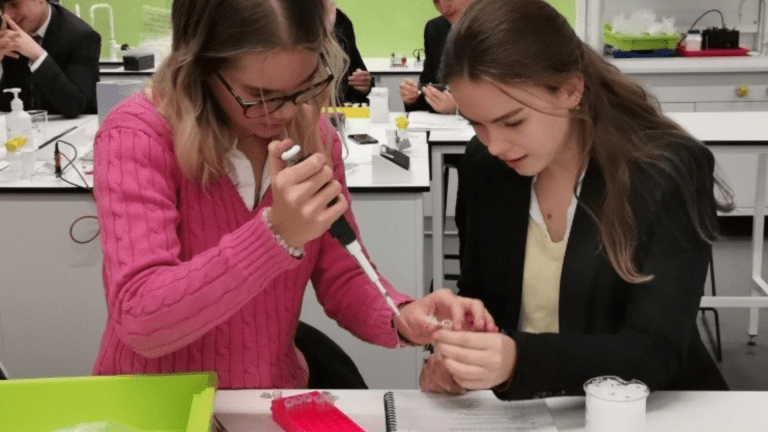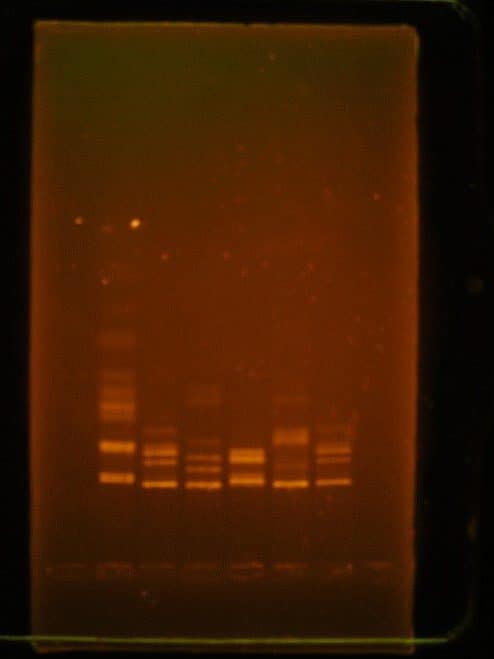Biology pupils took part in the AMGEN Biotechnology experience
9 February 2023

For the last three weeks of the half term, pupils studying Biology in Years 10, 12 and 13 have been able to participate in some advanced Biotechnology practical work, courtesy of the AMGEN Biotechnology experience.
Various pieces of equipment have been borrowed from the John Innes Centre in Norwich, which has enabled the pupils to carry out some advanced genetics experiments which are usually only completed either in a university or research laboratory.
Year 12 have been learning about Polymerase Chain Reaction (PCR), the use of restriction enzymes to cut DNA and gel electrophoresis. They have taken a plasmid containing a specific gene (rfp protein from a species of sea anemone that causes red fluorescence) and used restriction enzymes to cut that piece of DNA from the plasmid. Using the same enzymes and a ligase the pupils have then taken another plasmid (containing an activator sequence for the gene) and inserted the removed rfp gene sequence into this plasmid. Following PCR to amplify the DNA obtained, the pupils then were able to carry out gel electrophoresis to confirm they had successfully created a new hybrid piece of DNA.

Year 13 were able to take this one step further. Learning about genetic engineering, they were able to take the transformed plasmid (containing the rfp gene and an antibiotic resistance gene) and insert that into bacteria to create genetically engineered microorganisms. Some bacteria will not have taken up the plasmid, so they were cultured on a gel with antibiotic so the bacteria that had the plasmid would survive and grow and as they had the fluorescence rfp protein, they were visible as pink colonies. A control group with no plasmid were grown to demonstrate the antibiotic was effective against those bacteria without the plasmid containing the resistance gene.
To confirm the plasmid had successfully been incorporated into the bacterial DNA, a sample of transformed bacteria were taken and PCR was used to amplify the DNA. The groups then carried out gel electrophoresis, comparing the bacterial DNA with the engineered plasmid. Two fragments the same size were found, indicating the transfer of the plasmid had been successful.


Some separate science classes in Year 10 were also able to experience some of these techniques, as they carried out a simple crime scene analysis exercise. Pupils learnt how to use micropipettes and used restriction enzymes to cut the DNA of 5 ‘suspects’ along with DNA found at the ‘crime scene’. They then carried out gel electrophoresis to analyse the different samples and determine whose DNA was found at the crime scene. In the photo below, the DNA from the crime scene is on the right hand well, and the 5 suspects are the wells to the left. Can you work out whose DNA it was?

These experiments have given our pupils a chance to carry out advanced practical work and experience the sort of tasks that will be carried out in a genetics laboratory in a university or research institute. Thanks to Phil Smith of the Teacher Scientist Network and John Innes Centre for lending the school the equipment that has enabled the experiments to be carried out.
